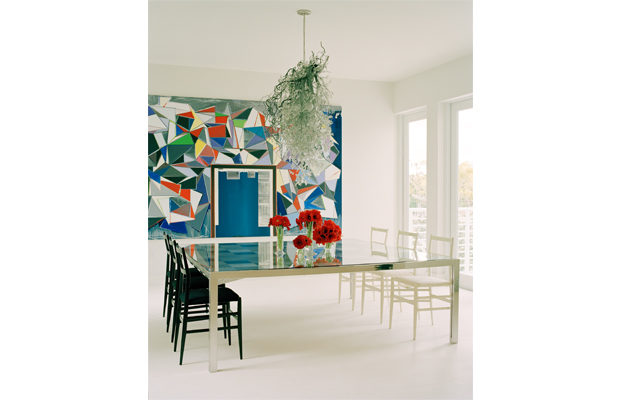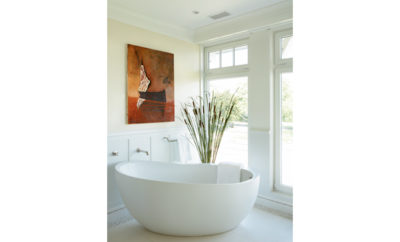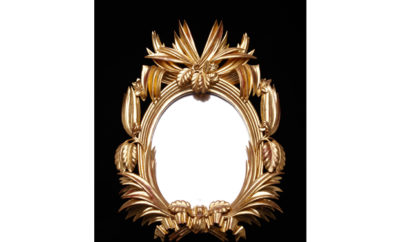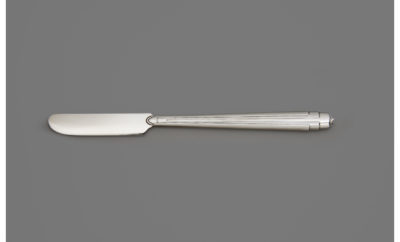
Feature
Best in Show

Best in Show
Interior designer Amy Lau considers her craft to be more about curating than decorating. Sure, the scope of her work often entails specifying curtains and throw pillows and even minutiae like soap dispensers. But her heart and mind are motivated by headier stuff: amassing heirloom quality furniture for her clients, who include such bold-face names as Elvis Costello and Elie Tahari.
Most of the time that means building collections from scratch or advising on new acquisitions by chaperoning clients to trade shows and galleries and suggesting reading lists tailored to a particular passion—be it Memphis or moderne. It is not often that she’s handed the keys to a storage facility housing a client’s museum-worthy collection and given carte blanche to shop away. Which is what happened when Craig Robins and Ambra Medda tapped Lau to transform a Miami town house into a showpiece of contemporary art and modern design. The town house in question is a four-story, four-bedroom property that architect Allan T. Shulman designed for Aqua, the New Urbanist–influenced bay-front community Robins developed in Miami Beach. The real estate entrepreneur and art collector envisioned using the house to host private events as well as out-of-town designers, dealers, and culturati in need of a place to crash. To outfit the space, Lau was given access to Robins’s holdings—which include works by John Baldessari, Marlene Dumas, and Olafur Eliasson—and to warehouses of vintage furnishings owned by Medda’s mother, Giuliana, who runs the London design gallery Themes and Variations. “This was meant to be something of a fun party pad, while also telling the more serious story of fine art meeting high design,” Lau explains. When the project began the trio was planning the inaugural Design Miami fair, cofounded by Robins, Medda, and Lau (a former design director of New York’s much-admired, but now shuttered Lin-Weinberg design gallery) and timed to coincide with the hugely popular Art Basel Miami Beach expo. The town house, they reasoned, should demonstrate the juxtapositions of blue chip contemporary art and the rare and limited edition furnishings that Design Miami would showcase. “A lot has changed in the last few years, but at the time, we didn’t feel that high design was being shown in the right context,” Lau says. “Talents like Marc Newson were exhibiting at Gagosian and other art galleries. Our goal was to elevate design so it wasn’t a mere stepsister to fine art.”
Following suit, Lau chose furnishings first. The Medda collection, dispersed among numerous warehouses, “featured all the heavy hitters— Gio Ponti, Ico Parisi, Ettore Sottsass— with an emphasis on ‘40s and ‘50s Italian design,” she says. “There were pieces I’d die for, like a pair of rare Ponti open armchairs in ash.” Lau and her staff made an inventory of all the pieces she could potentially use. “It was a connoisseur’s job. Our team photographed and measured everything to determine what would work thematically—we went for leggy, stylized forms—and within the floor plan.” The short list included a sculptural 1970s Paul Evans metal table and Ponti “Superleggera” chairs for the dining room, a Max Ingrand standing lamp and the aforementioned Ponti armchairs for the living room. A pair of 1960s Charlotte Perriand stools found a home in the master bedroom. “The pieces are all lookers yet they reflect their movements, the artistry, and technical development of their time,” Lau says. The selection process also entailed determining “what would need to be re-electrified,” she continues. She upgraded the study’s Silvio Cavatorta shelving system with new glass and hardware, reupholstered the insect-like Osvaldo Borsani “P40” lounge chair beside it with archivally researched fabric, and refinished wood furnishings such as a circa 1935 Ponti olivewood coffee table. “Maintaining a collection is as important as curating it,” Lau notes. “We always make sure joints are tight and caning is sound so pieces don’t weather more over time; otherwise, their liveliness diminishes.” She is not above taking slight liberties with original condition in the interest of durability and usability. For instance, wooden pieces subject to heavy use are often treated to a sturdy, yet reversible, coating that leaves the original finish intact below. “My refinisher perfected the technique after seeing so many ruined George Nakashima and Ponti tables,” Lau says.
Once furnishings were chosen, Lau worked with Robins’s in-house curator, Tiffany Chestler, to finalize the selection of paintings and sculptures. A Mette Tommerup print was hung near the kitchen’s oneof- a-kind Tom Dixon dining table. A Deborah Thomas chandelier and monumental Thomas Scheibitz oil bring aesthetic thunder to the dining room. “We kept the envelope monochromatic—creamy terrazzo floors and white paint—so anything placed on the walls would jump out,” says Lau. “The graphic quality of the artworks plays against the sculptural furnishings.” Rounding out the icons are a few contemporary interlopers (outdoor seating, reproduction Edward Wormley sofas) plus an assortment of mostly “no name” accessories that offer in quirk what they lack in provenance. “Filling up the shelves was one of the hardest parts of the process,” Lau explains. “I spent a lot of time wheeling and dealing at the local mom and pop shops. The antiquing scene in Miami is so kooky and spread out, but I discovered some great resources— and deals to die for.” In the spirit of a true curator, she’ll keep those sources top secret, thank you very much.












